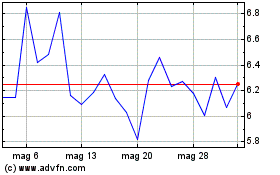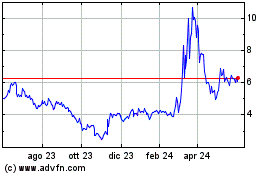- The rapid growth of Lantern Pharma’s AI platform could lead to
accelerated development of better treatments, greater precision in
clinical development, and improved combination regimens with the
potential for longer and more durable patient responses.
- Lantern's RADR® platform recently surpassed 60 billion data
points and is planned to exceed 100 billion data points during 2024
and has been crucial in the expansion of the indications for drug
candidate LP-184 and in the accelerated development of LP-284.
- Lantern seeks to focus additional data growth efforts of the
RADR® platform on: drug sensitivity data, combination treatment
outcome data, and biomarker data in rare cancers, and on emerging
synthetic lethal targets that are aimed at accelerating the
development of new therapies for Lantern and its partners.
- Lantern will also enhance the RADR® platform's generative AI
capabilities, focusing on molecular optimization and automated
feature extraction to improve understanding and prediction of
molecular dynamics, safety, and drug-drug interactions.
Lantern Pharma Inc. (NASDAQ: LTRN), a leader in AI-driven cancer
drug discovery and development, announced a series of important
milestones related to the development, size, and advancement of
RADR® -- its proprietary AI platform focused on transforming the
cost, pace, and timeline of oncology drug development.
This press release features multimedia. View
the full release here:
https://www.businesswire.com/news/home/20240304409919/en/
(Graphic: Business Wire)
“Every data point we add to RADR® further advances our goal of
building the most complete, largest, and most powerful AI platform
for oncology drug development. This unparalleled growth in data
points provides us with greater and potentially more accurate
insights into areas of cancer treatment that have insofar seen
little to no progress, while also giving us a solid and
cost-advantaged starting point to transform that,” said Panna
Sharma, CEO and President of Lantern Pharma. “RADR® has now
surpassed 60 billion data points, making innovation in developing
cancer therapies potentially more precise, powerful, and
comprehensive. Additionally, we continue to automate key areas of
the growth in our data collection and curation, leading us to have
more successful and larger data expansion campaigns. We expect that
the RADR® platform will advance to over 100 billion data points
this year, giving us a unique and unparalleled ability aimed at
guiding drug development in a wide range of adult and pediatric
cancers that need improved therapies.”
Lantern plans to continue the expansion and growth of RADR® data
with an increasingly automated, machine learning enabled process,
that allows the collection, tagging, and curation of datasets from
proprietary, collaborative, and public sources in a highly
efficient manner. Lantern also expects that a meaningful amount of
the new data will come from immuno-oncology (IO) studies, and IO
clinical trials as well as from proprietary analysis aimed at
molecular feature extraction from hundreds-of-thousands of
molecules (both FDA approved and those under development).
Large-scale data expansion efforts were initially begun for RADR®
in early 2019 when the platform had under 20 million data points,
and grew to nearly 300 million data points by mid-2020 (at the time
of the Lantern’s IPO) and today have grown beyond 60 billion – a
200x increase since the IPO and a nearly 3,000-fold increase since
the start of the data-growth campaigns. This strategy has allowed
data from thousands of previously siloed sources to be analyzed in
a more comprehensive, complete, and productive manner and has aided
in the development of new indications for LP-184 and the
development of LP-284 in a highly compressed and cost-effective
manner while also leading to several conference posters, and
scientific publications by Lantern Pharma and our
collaborators.
The current data-growth campaigns, which plan on the addition of
antigen, immune-response, and protein data, are also enabling a
more robust and powerful multi-omic analysis that is positioned to
guide the use of LP-184, LP-284, and other similar synthetically
lethal agents in combination with standard-of-care checkpoint
inhibitors. These large-scale, machine-learning driven analyses can
be critical in future efforts where AI can contribute more
efficiently to drug development efforts by automatically creating
its own models and testing combinations of drugs not previously
being considered, including in rare and hard-to-treat oncology
indications where conventional therapies have failed to show any
measurable improvement or where patients often will develop
resistance to these therapies and require new approaches.
“With every new piece of useful data, RADR® becomes more capable
of creating and testing against statistically meaningful models
that can help us to identify potential treatments in areas of unmet
need that can make a difference and lead to positive outcomes for
patients,” said Sharma. “With the growing set of data points RADR®
is able to test hundreds of combinations of drugs against these
models we did not have before, and quickly determine whether
certain compounds deserve additional attention from our efforts or
the efforts of our collaborators. Additionally, we can uncover new
correlations that may have gone underappreciated or have been
challenging to uncover without the support of powerful AI
approaches. This expansion of data within RADR® provides the
potential to identify and predict pathways of resistance early in
drug development and therapeutic avenues to mitigate or circumvent
these challenges.”
“RADR’s growth has also deepened our capabilities in novel ADC
development and has allowed us greater capability in predicting
combination therapy approaches using our own drug candidates as
well as existing approved immuno-oncology therapies,” said Sharma.
“Previously this type of work in identifying and analyzing new
cancer therapies and new uses for existing cancer therapies has
been costly, slow and often lacked correlations with real-world
outcomes. While studying the impact of compounds and therapeutic
combinations previously took years, RADR® has reduced many aspects
of this process to mere months. Because the drug development
timeline already takes between 10 and 12 years to successfully
complete, being able to reduce that by even half would have the
potential to not only change the industry but also outcomes for
millions of people waiting on cancer therapies and cures.”
About RADR®
RADR® is Lantern Pharma’s proprietary integrated AI platform for
large-scale biomarker and drug-tumor interaction data analytics
that leverages machine learning. It is used to provide mechanistic
insights about drug-tumor interactions, predict the potential
response of cancer types and subtypes to existing drugs and drug
candidates, and uncover patient groups that may respond to
potential therapies being developed by Lantern Pharma and its
collaborators.
RADR® uses an ensemble-based approach to apply its library of
algorithms to statistical, correlative, and inferential problems in
drug-tumor interactions. This allows the platform to rapidly
analyze large amounts of complex data and predict how both patients
and tumors will respond to therapeutic combinations. RADR® also
evolves as new datasets are added, which improves and sharpens the
insights generated from the algorithms.
RADR's highly scalable machine-learning methods are designed to
guide drug development and yield new biological insights, while
also having the potential to increase response rates and improve
outcomes in clinical trials. The robustness and growing number of
datasets powering RADR® is anticipated to continue to improve
machine-learning results, accelerate automation of other features
and aid oncology drug development for Lantern and its partners with
an ultimate focus on benefitting cancer patients.
About Lantern Pharma:
Lantern Pharma (NASDAQ: LTRN) is an AI company transforming the
cost, pace, and timeline of oncology drug discovery and
development. Our proprietary AI and machine learning (ML) RADR®
platform leverages over 60 billion oncology-focused data points and
a library of 200+ advanced ML algorithms to help solve
billion-dollar, real-world problems in oncology drug development.
By harnessing the power of AI and with input from world-class
scientific advisors and collaborators, we have accelerated the
development of our growing pipeline of therapies including eleven
cancer indications and an antibody-drug conjugate (ADC) program. On
average, our newly developed drug programs have been advanced from
initial AI insights to first-in-human clinical trials in
approximately 2-3 years and at approximately $1.0-2.0 million per
program.
Please find more information at: Website:
www.lanternpharma.com LinkedIn:
https://www.linkedin.com/company/lanternpharma/ X: @lanternpharma
Monthly Newsletter: Sign-up here
Forward-looking Statements:
This press release contains forward-looking statements within
the meaning of Section 27A of the Securities Act of 1933, as
amended, and Section 21E of the Securities Exchange Act of 1934, as
amended. These forward-looking statements include, among other
things, statements relating to: future events or our future
financial performance; the potential advantages of our RADR®
platform in identifying drug candidates and patient populations
that are likely to respond to a drug candidate; our strategic plans
to advance the development of our drug candidates and antibody drug
conjugate (ADC) development program; estimates regarding the
development timing for our drug candidates and ADC development
program; expectations and estimates regarding clinical trial timing
and patient enrollment; our research and development efforts of our
internal drug discovery programs and the utilization of our RADR®
platform to streamline the drug development process; our intention
to leverage artificial intelligence, machine learning and biomarker
data to streamline and transform the pace, risk and cost of
oncology drug discovery and development and to identify patient
populations that would likely respond to a drug candidate;
estimates regarding patient populations, potential markets and
potential market sizes; sales estimates for our drug candidates and
our plans to discover and develop drug candidates and to maximize
their commercial potential by advancing such drug candidates
ourselves or in collaboration with others. Any statements that are
not statements of historical fact (including, without limitation,
statements that use words such as "anticipate," "believe,"
"contemplate," "could," "estimate," "expect," "intend," "seek,"
"may," "might," "plan," "potential," "predict," "project,"
"target," "model," "objective," "aim," "upcoming," "should,"
"will," "would," or the negative of these words or other similar
expressions) should be considered forward-looking statements. There
are a number of important factors that could cause our actual
results to differ materially from those indicated by the
forward-looking statements, such as (i) the risk that our research
and the research of our collaborators may not be successful, (ii)
the risk that promising observations in preclinical studies do not
ensure that later studies and development will be successful, (iii)
the risk that none of our product candidates has received FDA
marketing approval, and we may not be able to successfully
initiate, conduct, or conclude clinical testing for or obtain
marketing approval for our product candidates, (iv) the risk that
no drug product based on our proprietary RADR® AI platform has
received FDA marketing approval or otherwise been incorporated into
a commercial product, and (v) those other factors set forth in the
Risk Factors section in our Annual Report on Form 10-K for the year
ended December 31, 2022, filed with the Securities and Exchange
Commission on March 20, 2023. You may access our Annual Report on
Form 10-K for the year ended December 31, 2022 under the investor
SEC filings tab of our website at www.lanternpharma.com or on the
SEC's website at www.sec.gov. Given these risks and uncertainties,
we can give no assurances that our forward-looking statements will
prove to be accurate, or that any other results or events projected
or contemplated by our forward-looking statements will in fact
occur, and we caution investors not to place undue reliance on
these statements. All forward-looking statements in this press
release represent our judgment as of the date hereof, and, except
as otherwise required by law, we disclaim any obligation to update
any forward-looking statements to conform the statement to actual
results or changes in our expectations.
View source
version on businesswire.com: https://www.businesswire.com/news/home/20240304409919/en/
Investor Relations ir@lanternpharma.com
Grafico Azioni Lantern Pharma (NASDAQ:LTRN)
Storico
Da Dic 2024 a Gen 2025

Grafico Azioni Lantern Pharma (NASDAQ:LTRN)
Storico
Da Gen 2024 a Gen 2025
